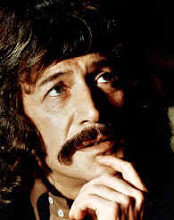First impressions can be misleading, and so it proves with Jordan. The taxi ride from Amman airport is certainly an experience - my driver seems to have a phobia about touching the steering wheel, and spends much of the journey raging in Arabic into his mobile phone. It’s when I discern that he is asking someone for directions to my hotel that I start to get a little nervous. Nevertheless, after an uncomfortable forty five minutes we reach my destination and I gratefully allow him to rip me off for the cab fare.
Fortunately, the taxi driver proves to be an aberration and the welcome I receive at the Toledo hotel is a warm one. My time here is limited so I hasten to arrange tours to the Roman city of Jerash, and to the main reason for my visit, the ancient city of Petra - so frequently hailed as one of the wonders of the world.
The next day I share a cab to Jerash with an older British couple who have also recently arrived in Amman. The husband comments that the taxi driver that brought them from the airport was ‘a maniac’ and we wonder if it was the same fellow who conveyed me so memorably. Our driver to Jerash is a charming Jordanian called Abu Saleem who takes time to point out olive and pepper trees by the road and to purchase cheap but filling flatbread sandwiches for us.
Jerash itself, framed by the imposing Hadrian’s Arch which rises incongruously above the modern town that guards the entrance to the ancient city, is extraordinarily well preserved. As I sit on the upper levels of the magnificent amphitheatre and gaze down on the stage I can’t help but think of the Romans who warmed the seat for me nigh on 1800 years ago, indeed some of them carved their names into the stone, an early method of reserving their seat for whatever attractions were put before them.
As for Petra, a three hour drive to the south of Amman, it proves to be even more extraordinary than I have imagined. The Treasury, familiar from Indiana Jones and the Last Crusade and countless guidebook covers, stops me dead in genuine awe when I glimpse it through the slit of the gorge that marks the entrance to the ‘rose-red city half as old as time’.
Further in to this magnificent fusion of the man-made and the natural I begin the climb up the mountainside to the mysterious building known as the Monastery. The ascent, past hawkers, donkey taxis and perspiring German tourists, proves arduous but more than worthwhile. The great columned facade of the Monastery impresses, but most remarkable of all are the magnificent views of the valley that are revealed from this lofty place. I stand for some time on the edge of a rocky outcrop, alone, but not remotely lonely, the vast red mountains a reminder of how insignificant so much of our lives are. They’ve been here forever, and they’ll be here long after we’re gone. Yes, the city of the Nabataeans is amazing, but finally it is the wonders of nature that really put things in perspective.
I get another dose of perspective on my way out of the site, when a little Arab boy asks me for a gum. I give him a sweet which he takes with dusty fingers. I’ve seen many young children around the site, selling stones and trinkets - a hard life for them amongst all this beauty.
Thirty-six hours later I’m standing on the observation deck of the Burj Khalifa, the world’s tallest building, at least until someone decides they have to build a bigger one. The view of night-time Dubai is impressive but it doesn’t touch the soul like Petra did. As I stare through the windows at the metropolis below I think of the Nabataeans. Is the city below so different from theirs? The neon-lit skyscrapers have the same purpose as the Treasury and the Monastery – to impress - and its vast shopping malls are just temples to a different set of idols. No doubt the Nabataeans never thought that Petra would one day be dead and abandoned; and I can’t help but wonder if in two thousand years the ultra-modern city below will be one more desert-buried mystery for tourists to marvel at.
Shelley put it best perhaps when he considered the temporary nature of human power and civilisation.
‘My name is Ozymandias, king of kings,
look on my works, ye mighty and despair!’
Nothing beside remains,
Round the decay of that colossal wreck, boundless and bare,
the lone and level sands stretch far away.
